Results 10,221 to 10,230 of 12096
Thread: Anandtech News
-
01-08-20, 06:56 PM #10221
Anandtech: Seagate Demonstrates HAMR and Dual-Actuator Hard Drives in the Lyve Drive
Seagate had two major announcements at CES 2020 - one featuring updates to their lineup of external storage devices, and the other related to a modular storage system with the Lyve branding on it. The novelty of the modularity and data storage capacity aside, we found the hard drives being used in the sytem to be more interesting. Seagate's demonstrations included HAMR and dual-actuator drives.
The Lyve Drive Mobile Storage System is a set of products aimed and enterprises and businesses that need to collect a large amount of data in the field and move them to centralized storage in-house at a later point in time. This is common in the media and entertainment industry (where the video recording may take place outside the studio), or, enterprises that collect sensor and image data from cars driven to train machine learning models.
The system includes high-performance CFExpress cards, a Thunderbolt 3 connector for the same, card readers, cartridges with a U.2 interface, 6-bay mobile arrays and 4-bay modular arrays (capable of handling 3.5" hard drives), a shuttle device that can act as a DAS or a network-attached drive, cartridge and array mounts and shippers, and a 4U rackmount receiver.
The Lyve Drive Mobile demonstration at CES 2020 had a 108TB Mobile Array comprising of six 18TB Exos HAMR hard drives and a 56TB Modular Array with four 14TB Exos 2x14 hard drives. The Exos 2x14 drives use the MACH.2 multi-actuator technology. The latter provides twice the IOPS and up to 480 MBps sequential write throughput compared to single-actuator drives. To our knowledge, this is the first time that Seagate has had a public demonstration of their dual-actuator drives, even though they had indicated multiple months of live production traffic on the Mach2 drives early last year.
The demonstrations indicate that HAMR and dual-actuator Seagate drives may get a public release with widespread market availability very soon. On the Lyve Drive front, Seagate didn't provide any pricing information or retail readiness status for any of the components.
More...
-
01-09-20, 07:20 AM #10222
Anandtech: CES 2020: Lenovo Ducati 5, a Notebook Designed from a Motorbike
Branded hardware isn’t a new concept, and the latest one out of the gate is Lenovo’s new Ducati 5 laptop. Lenovo has partnered with Ducati to combine the styling of two of Ducati’s two-wheelers into a new notebook to be used by those who want to show off their affiliation. The laptop is going to be limited edition, with only 12,000 units available, while aiming for a reasonable price point.
We’ve seen these sorts of collaborations before. We know that Porsche Design always partners with Huawei for its smartphones, and I’ve even seen ASRock sell motherboards with what looks like a Lamborghini on the front (even though there was no official collaboration there). I remember back in 2009, when I purchased an Acer Ferrari One, a $450 dual-core AMD Fusion notebook that should have been about $300, but I used that think like no-other. I still have it. But there are two types of these sorts of collaborations – one where the company involved gets a lot of hardware it can use internally / show off on camera at racing events, and one where the goal is actually to offer an end-user something special.
With the new Lenovo Ducati 5, I believe it’s the former: expect to see a lot of Ducati notebooks in the new MotoGP season. Lenovo states that the design is inspired by the Ducati Panigale, with notes to match the honeycomb exhausts of the Ducati Monster frames. The BIOS is even MotoGP themed apparently, and you should expect some extra MotoGP background options. The unit will be supplied in a Ducati-branded gift box, with a Ducati laptop sleeve.
This hardware is fairly middle of the road: a 14-inch 1080p IPS device with 300 nits brightness, featuring up to a Core i5-1035G1 (that’s the low-end graphics model), with 8 GB of memory and up to 1 TB of NVMe storage. Connectivity comes via two USB-A ports, a Type-C, a HDMI 1.4b output, and an SD card reader. WiFi is an 802.11ax solution (Wi-Fi 6), the battery is good ‘up to 12 hours’, and the unit comes with a fingerprint reader as well as a privacy shutter for the camera. Weight is listed at 1.58 kg / 3.48 lbs.
Pricing for the Lenovo Ducati 5 will start from 900 Euros, and will go on sale in April. As mentioned, this is a 12,000 unit limited edition product, but also will not be sold in the USA.
Gallery: CES 2020: Lenovo Ducati 5, a Notebook Designed from a Motorbike





More...
-
01-09-20, 11:58 AM #10223
Anandtech: Seeing Is Believing: Intel Teases DG1 Discrete Xe GPU With Laptop & Deskto
While CES 2020 technically doesn’t wrap up for another couple of days, I’ve already been asked a good dozen or so times what the neatest or most surprising product at the show has been for me. And this year, it looks like that honor is going to Intel. Much to my own surprise, the company has their first Xe discrete client GPU, DG1, at the show. And while the company is being incredibly coy on any actual details for the hardware, it is none the less up and running, in both laptop and desktop form factors.
More...
-
01-09-20, 11:58 AM #10224
Anandtech: ASUS Going Fast: Quad PCIe 4.0 x4 SSD Storage Add-in Card Hyper M.2
One of the driving features of performance in the high-end desktop space is the creator community: the need for fast CPUs and fast storage is strong, regardless of cost. Rendering video, requiring large 8K datasets, and being able to mix and match the hardware to meet the required performance is in-of-itself an exciting area to delve into. In order to meet the needs of the most demanding creators, ASUS is upgrading its quad M.2 card it put into the market last year to now support PCIe 4.0 SSDs for the latest AMD systems.
The card is essentially a mounting point to take a full x16 PCIe slot and bifurcate it into four separate PCIe 4.0 x4 links, which is each paired with an M.2 connector. Thus each drive should be able to achieve full speed – in order to ensure this, the drive also comes with a full aluminium heatsink and fan, which operates at a reasonably low RPM. The fan can be enabled or disabled via a switch on the PCIe bracket, and the bracket also has four activity LEDs for each of the drives.
One of the big issues with the older PCIe 3.0 version was the support of the card on different systems. The card worked well on AMD systems, but had issue with Intel systems, because Intel’s PCIe solution did not support multiple endpoints in the same way. With this new solution, that problem ultimately disappears, because Intel has no PCIe 4.0 solution right now.
We expect the Hyper M.2 x16 Gen 4 card to be available soon, focused mainly for Threadripper and EPYC systems. Pricing should be equivalent to the PCIe 3.0 version.
More...
-
01-09-20, 05:40 PM #10225
Anandtech: ARRIS Expands Wi-Fi 6 Portfolio with AX6600 SURFboard mAX Mesh System
ARRIS announced the SURFboard mAX AX6600 Mesh Wi-Fi 6 System, a Broadcom BCM6755-based design, at CES 2020. In 2019, ARRIS had announced the SURFboard mAX PRO AX11000 for $650 (kit of two) and the SURFboard mAX PLUS AX7800 for $550 (kit of two). The new AX6600-class SURFboard mAX will enter at a lower price point (exact pricing was not announced) to complement the higher-end kits.
Similar to other AX6600-class Wi-Fi 6 mesh designs, the SURFboard mAX also comes with a tri-band configuration (2x2 2.4 GHz for 600 Mbps, 2x2 5 GHz for 1200 Mbps, and a 4x4 160 MHz-wide 5 GHz radio for 4800 Mbps). The 4x4 is used as a dedicated backhaul in the mesh kit. ARRIS claims that a kit of two can blanket a 5500 sq. ft. area.
In terms of the internal components, the unit seems similar to the Asus ZenWiFi AX (XT8), but the industrial design and antennae placement (which affects performance) are different. Additionally, the SURFboard mAX AX6600 comes with only two gigabit Ethernet ports per unit (unlike the Asus ZenWiFi which comes with a 2.5 Gbps port). ARRIS also indicated Alexa compatibility for the unit.
Availability is slated for Q2 2020, and the pricing ought to be under the $550 mark (given that the mAX PLUS AX7800 kit sells for that). Similar to the other members of the mAX family, the AX6600 version will also be available as a standalone router.
More...
-
01-09-20, 05:40 PM #10226
Anandtech: CES 2020: ZOTAC Announces ZBOX Edge MI643 Powered By Intel Comet Lake
All told, ZOTAC has launched several ZBOX SFF PCs at this year's CES. Typical for the company's wide reach, they're gearing up to release a range of boxes at multiple TDPs, and incorporating CPUs from both x86 vendors. Towards the higher end of their latest product stack is the ZOTAC ZBOX Edge MI643, which like the rest of the Edge series PCs, is non-exclusively focused on the edge computing market. Overall, the MI643 is a compact desktop system based on Intel's Core i5-10210U quad-core processor, and measures just 1.12 inches tall.
Under the hood, the quad-core Intel processor offers a base frequency of 1.60 GHz, and turbo clocks up to 4.20 GHz. The configurable TDP of between 10 and 25 W makes it ideal for smaller systems which usually sacrifice size for cooling potential. For graphics, the MI643 is utilizing Comet Lake's integrated Intel UHD graphics, which offers a base frequency of 300 MHz and a maximum turbo frequency of 1.10 GHz.
Elsewhere, some of the main features of the ZOTAC ZBOX Edge MI643 include two SODIMM slots capable of supporting up to 64 GB of DDR4-2400/2666 memory, with two M.2 slots for available for M.2 SSDs. On the rear panel is two Gigabit Ethernet ports, as well as an antenna port for the 802.11ac wireless interface (which also offers BT 5.0 connectivity). In terms of USB options, there are three USB 3.1 G1 Type-A ports and one USB 3.1 G1 Type-C port. The ZOTAC ZBOX Edge MI643 also includes a single 3.5 mm audio jack, a microSD card reader, and a pair of video outputs consisting of an HDMI 2.0 port and a DisplayPort 1.2 output.
At present, there is no information on the expected pricing or availability of the MI643, but it is expected that they will hit retail shelves in the coming months.
More...
-
01-10-20, 07:34 AM #10227
Anandtech: CES 2020: Lenovo Unveils IdeaPad Duet Chromebook Detachable
The market for pure, Google Android-based tablets is not exactly thriving, and since Google ChromeOS can run applications for Android, pretty much all interest in non-Apple (or non-Windows) tablets has followed. To that end, at this week's CES Lenovo rolled out its IdeaPad Duet Chromebook, an inexpensive 2-in-1 that is as light as a tablet.
The IdeaPad Duet Chromebook is equipped with a 10.1-inch display featuring a 1920x1200 resolution and 400 nit maximum brightness, which is rather typical for a tablet. At the heart of the system is the Mediatek Helio P60T SoC (4x Arm Cortex-A73 at 2.0 GHz and Arm Mali G72-MP3), which is paired with 4 GB of LPDDR4X memory as well as a 128 GB eMMC solid-state storage.
Just like all modern tablets, the IdeaPad Duet Chromebook has a front and rear camera, speakers, microphones, Wi-Fi, and a USB Type-C connector. A key component of the product — which is why Lenovo defines it as a Chromebook — is its detachable keyboard with a trackpad, which has an 18 mm key pitch with 1.3 mm of key travel. The device also has a kickstand.
Given dimensions (the 10.1-inch slate is 7.3 mm thick) and a weight of 430 grams, the IdeaPad Duet Chromebook is well suited to serve as a tablet. However the detachable keyboard just as quickly transforms the device into an ultraportable laptop. While 2-in-1 Chromebooks are nothing new, those that are made by well-known OEMs are usually expensive, whereas Lenovo plans to sell its IdeaPad Duet Chromebook for $279.99, which is in line with cheap laptops running Google’s OS. It remains to be seen whether target audience of Chromebooks will actually bite a 10.1-inch detachable, but for people looking for an Android tablet, Lenovo’s offering may look attractive.
Lenovo plans to start sales of the IdeaPad Duet Chromebook in April.
Related Reading:
- HP Unveils Chromebook x2: A 12.3-inch 2400x1600 2-in-1 with Intel Core-Y
- Acer Announces Chromebook Tab 10: A Tablet Running Google’s Chrome OS
- Google Announces the Pixel Slate: A 12.3-Inch x86-Based Chrome OS Tablet
- The ASUS Chromebook Flip C434: A Convertible Chromebook with Premium Features
Source: Lenovo
More...
-
01-10-20, 08:09 AM #10228
Anandtech: CES 2020: MSI Announces MAG X570 Tomahawk WiFi
Looking to give AMD Ryzen buyers another affordable option for an X570 motherboard, MSI has brought one of its most popular B series models to the premium X570 chipset. The MSI MAG X570 Tomahawk WiFi will have a 12-phase CPU power delivery, support up to DDR4-4600 memory, and two PCIe 4.0 M.2 slots for just $189.
The MSI Tomahawk series is one that we have seen frequently here at AnandTech, with each iteration featured on the lower end of the AM4 socket models including the AMD's B350, and B450 chipsets. This is the first time the Tomahawk series has been brought to a premium chipset, with the MSI MAG X570 Tomahawk WiFi looking to cater to users looking to save some money over its other premium models while offering X570's main feature; PCIe 4.0 capability.
One of the core features of the MSI MAG X570 Tomahawk WiFi is in its networking capabilities, with a Wi-Fi 6 + BT 5.0 radio and a Realtek RTL8125-CG 2.5 G Ethernet controller. Other primary features include support for up to 128 GB of DDR4-4600 memory, three USB 3.1 G2 Type-A ports and one USB 3.1 G2 Type-C port on the rear panel, a 12+2 power delivery cooled by a large aluminum heatsink, as well as two full-length PCIe 4.0 slots which operate at x16, and x16/x4. Storage is handled by six SATA ports, and two PCIe 4.0 x4 M.2 slots for the latest PCIe 4.0 NVMe solid-state drives.
MSI didn't give specific availability or pricing for the MAG X570 Tomahawk WiFi motherboard, but they did say they expect it to cost around the $200 mark and hit the shelves sometime in Q1 of this year.
More...
-
01-10-20, 09:49 AM #10229
Anandtech: CES 2020: Cherry Unveils Viola Mechanical Switch for Low-Cost Keyboards
Since their resurgance in the gaming market almost a decade ago, mechanical switch keyboards have become and have remained a popular item within the gaming market as well as the market for high-end keyobards in general. And it's easy to see why, as mechanical switches have many advantages compared to keyboards with rubber dome or membrane switches; however they have one major disadvantage, their high cost. Cherry, the company that commands a sizable share of the switches market, introduced its low-cost Viola switches at CES 2020 that promise to enable keyboards makers to build cbeaper mechanical keyboards.
The Cherry Viola is a brand-new switch with a spring and V-shape bronze contact system. The switch uses an industry standard cross-stem that is compatible with a wide array of keycaps, and is contained in a precisely-engineered housing made of a plastic polymer featuring eight pillars. The engineering tolerance for the new switch is less than 0.01 mm, which helps to ensure wobble free keystrokes, a solid feel, and better typing accuracy. The switch uses a POM-socket, so it is frame mounted and does not require soldering.
Cherry’s Viola switch resembles Cherry’s MX Red when it comes to a 2 mm actuation point, a 4 mm total travel distance, and a 45 cN actuation force. Cherry promisees that the switch will be ‘mechanical’ and ‘tactile’, but the company does not want to draw direct parallels with its MX-series due to obvious reasons.
The architecture of the Viola switch was engineered not only to reduce its costs, but also to decrease production costs for makers of keyboards. Furthermore, since Viola uses transparent plastic, the switch is fully compatible with SMD LEDs enabling manufacturers to build low-cost gaming keyboards with RGB backlighting.Comparison of Mechanical Keyboard Switches Cherry
ViolaCherry
MX BlueCherry
MX BrownCherry
MX RedCherry
SilverRazer Green Actuation Point 2 mm 2.2 mm 2 mm 2 mm 1.2 mm 1.9 mm ± 0.4 mm Actuation vs Reset Point no data no data no data no data no data 0.4 mm Total Travel 4 mm 4 mm 4 mm 4 mm 3.4 mm 4 mm Actuation Force 45 cN 60 cN 55 cN 45 cN 45 cN 50 g Actuation Feel cross/linear linear/tactile linear/tactile linear linear soft tactile Switch Lifecycle ? million 50 million 50 million 50 million 50 million 60 million Switch Color white
transparentblue brown red silver green
At this time Cherry is not disclosing the cost of its Viola switch, but the company says that it expects the Viola to be a killer of rubber dome switches, which implies that it is rather cheap to make. Though ultimately the final price of keyboards are up to the manufacturers, so we'll find out the answer to the cost question in the coming quarters when the first products based on the Viola switch emerge on the market.
Related Reading:
- Cherry’s Secure Board 1.0 Encrypts Every Keystroke & Has Smart Card Reader
- Cherry Introduces New Low Profile RGB Switches at CES 2018
- Razer Unveils Optical Laptop Keyboard
- Kailh Introduces Low Profile Mini ‘Chocolate’ Keyswitches
- Cherry Launches MC 4900 Mouse with Fingerprint Reader, 1375 DPI Sensor
Source: Cherry
More...
-
01-10-20, 10:59 AM #10230
Anandtech: CES 2020: Patriot Goes Big on Bandwidth For New EVLVR 2 TB3 SSDs
At this year's CES, Patriot has introduced an enhanced version of its EVLVR (Evolver) Thunderbolt 3 external SSD. The new drive is set to offer radically improved sequential read/write performance versus the earlier EVLVR, and will come in capacities of up to 2 TB.
The Patriot EVLVR 2 Thunderbolt 3 SSDs come in a new candybar aluminum chassis with rounded edges that seems to have dimensions similar to the original EVLVR (10.1cm (L) × 4.6cm (W) × 1.1cm (H)). The chassis is big enough to house an M.2-2280 SSD based on Phison’s PS5012-E12 controller, using a PCIe 3.0 x4 connection to bridge theSSD to the Intel Thunderbolt 3 controller.
Patriot’s original EVLVR was based on Phison’s PS5008-E8 chip, which a low-cost controller featuring four NAND channels and a PCIe 3.0 x2 interface. As a result, the upgrade of the EVLVR2 to the high-end Phison PS5012-E12 featuring eight NAND channels and a PCIe 3.0 x4 interface should greatly boost the performance of the new drives. Officially, Patriot is claiming that the drive can hit sequential read speeds of up to 2.85 GB/s, while sequential writes will top out at 2.6 GB/s.
Patriot plans to offer its EVLVR 2 external SSDs in capacities of up to 2 TB, up from a maximum capacity of 1 TB in case of the original model. Though we'll have to wait and see just what the company will be charging for these capacities; the company is not announcing when it plans to start selling the new drive.
Related Reading:
- OWC Envoy Pro EX Thunderbolt 3 and Plugable TBT3-NVME2TB Portable SSDs Review
- OWC Unveils Second-Gen ThunderBlade External SSDs: 2800 MB/s Starting at $799
- Panasonic Announces Its First Thunderbolt 3 SSDs
- The Patriot Evlvr Portable Thunderbolt 3 1TB SSD Capsule Review
- Patriot Announces EVLVR Thunderbolt 3 SSD: Phison PS5008-E8, Up to 1.5 GB/s, 1 TB
Source: Patriot
More...
Thread Information
Users Browsing this Thread
There are currently 13 users browsing this thread. (0 members and 13 guests)








 Quote
Quote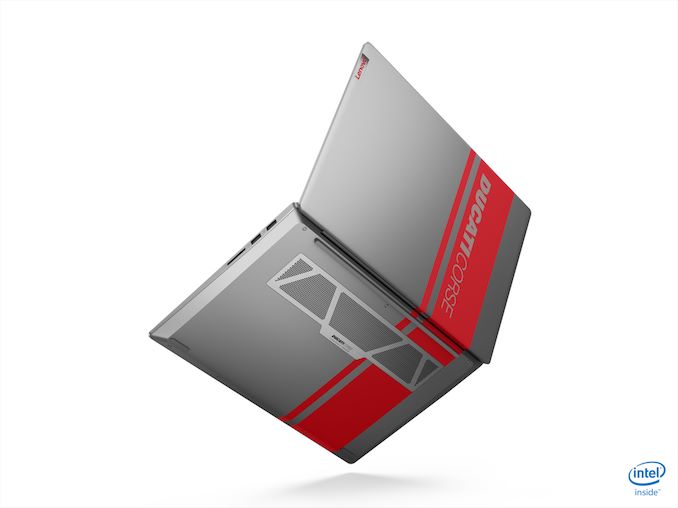
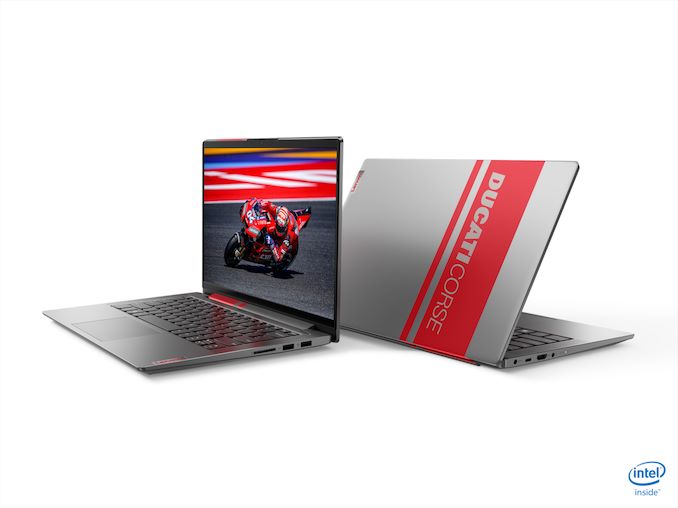

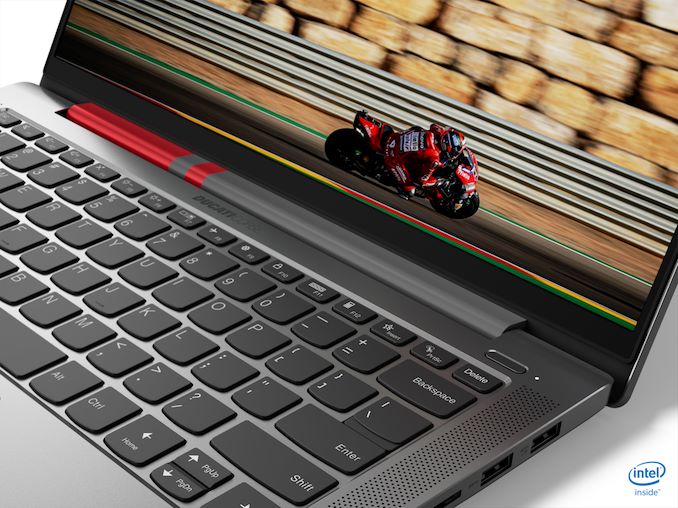
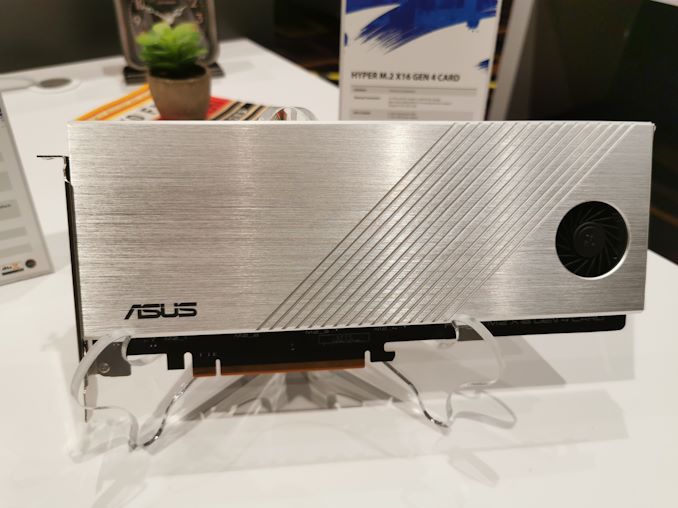
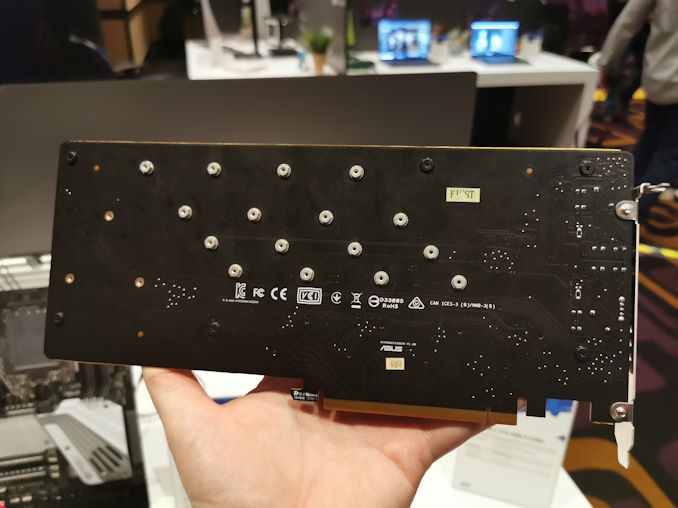
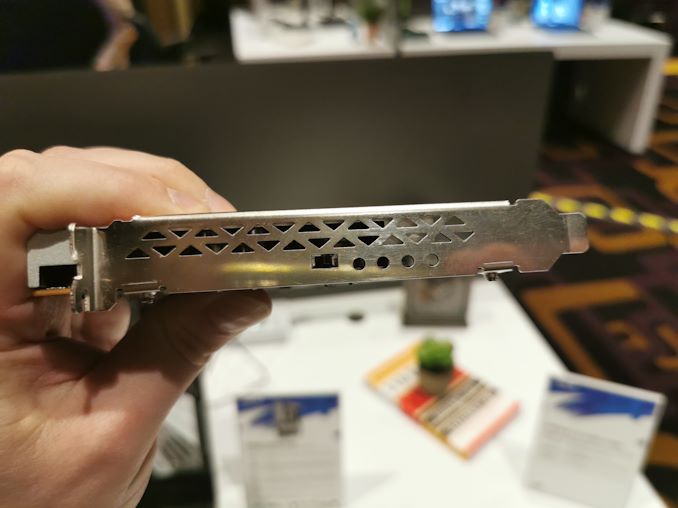
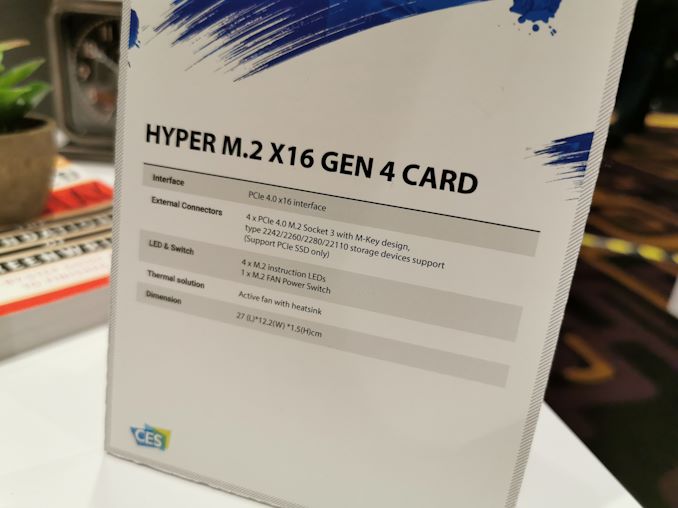
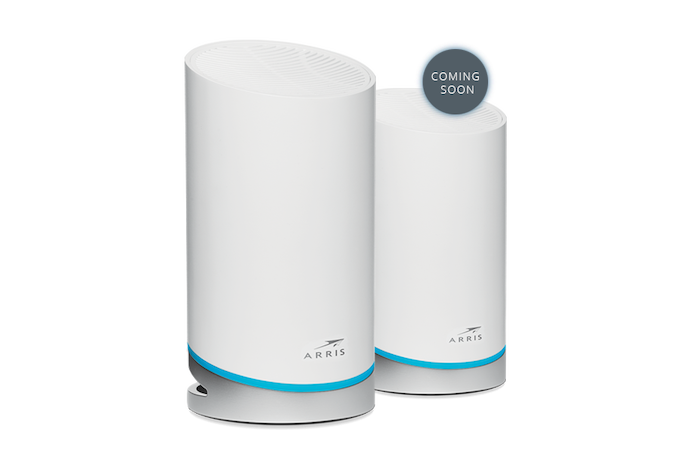
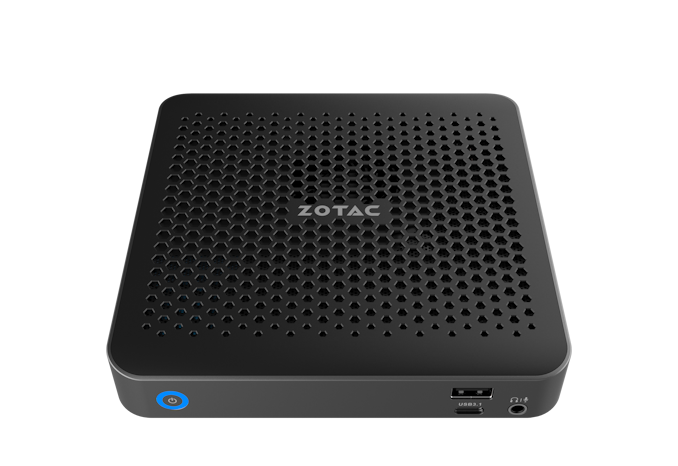


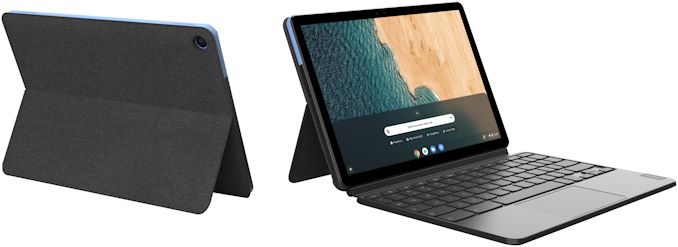
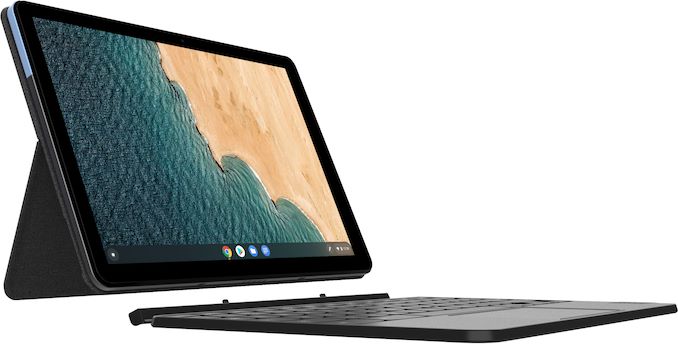
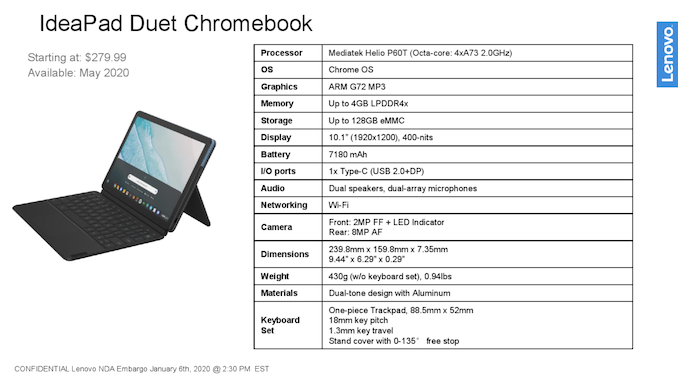
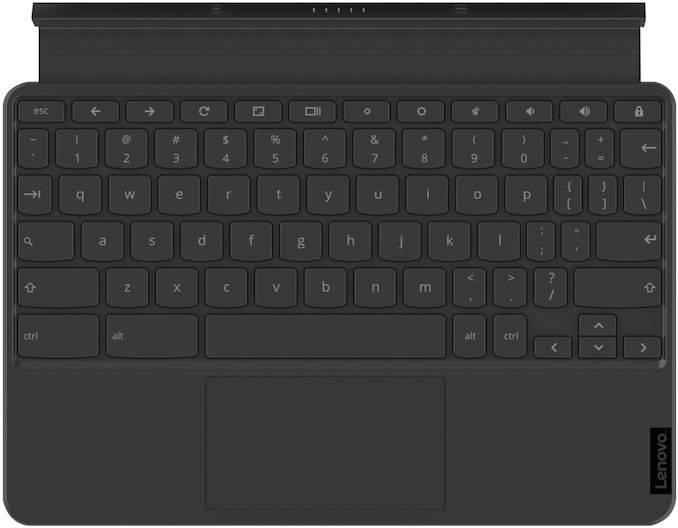


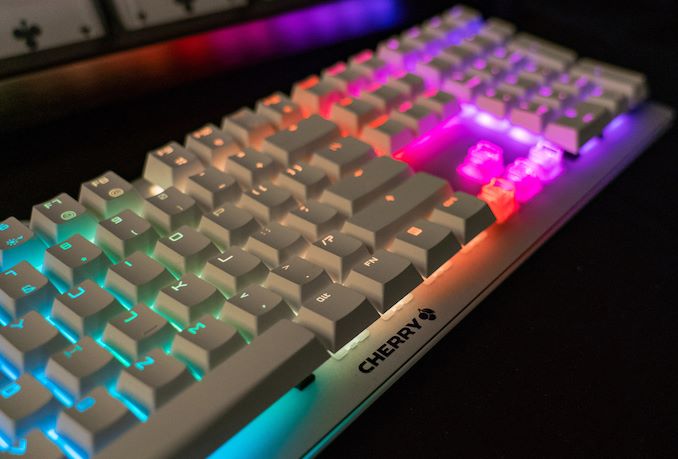

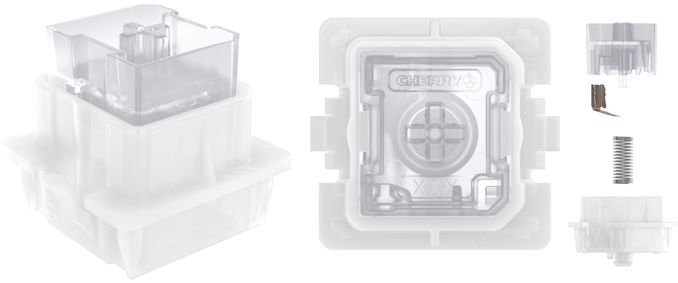

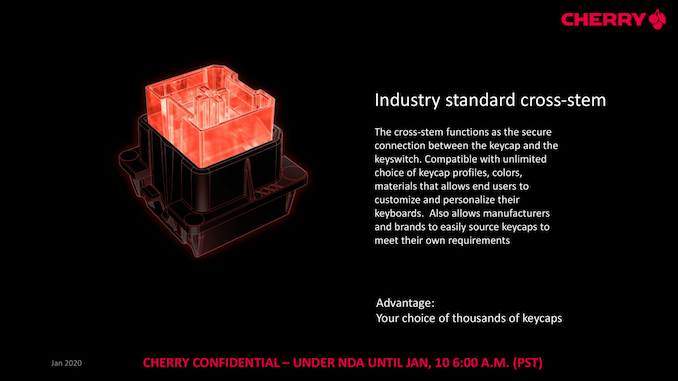
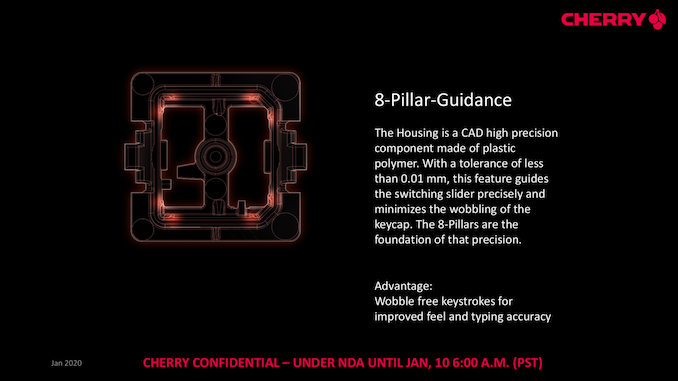
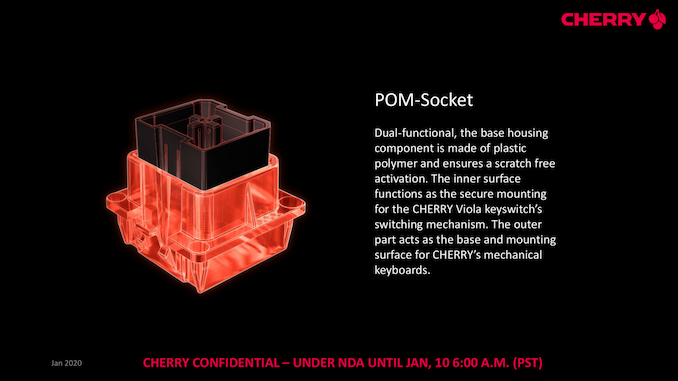
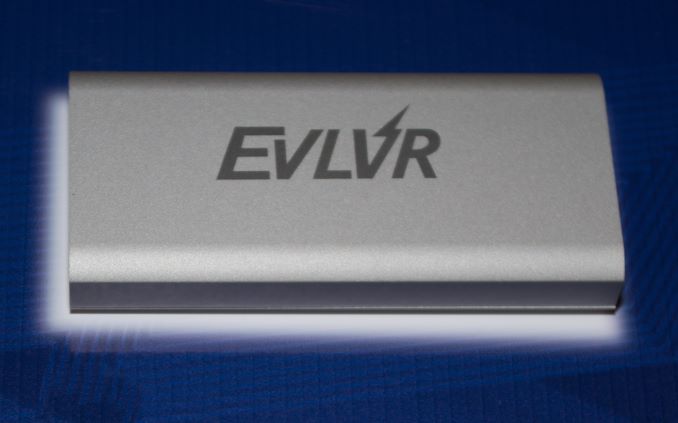
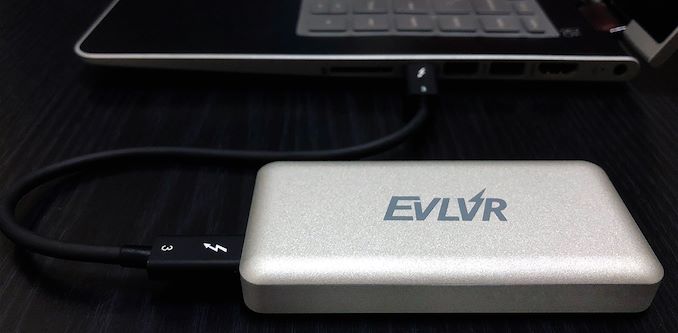
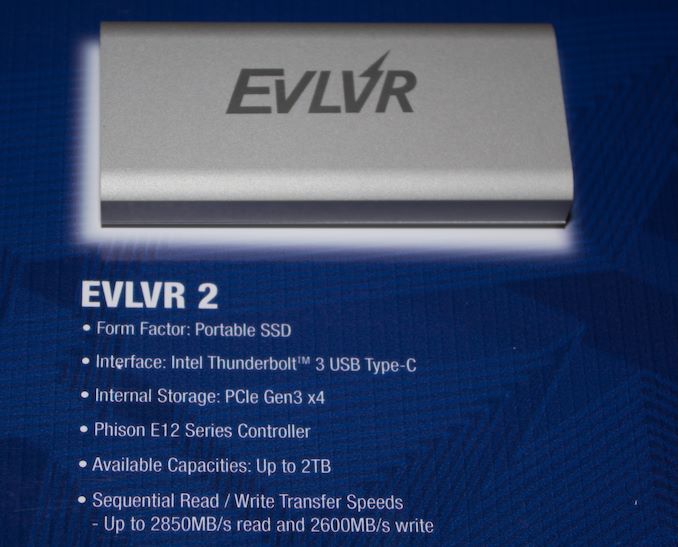
















Bookmarks